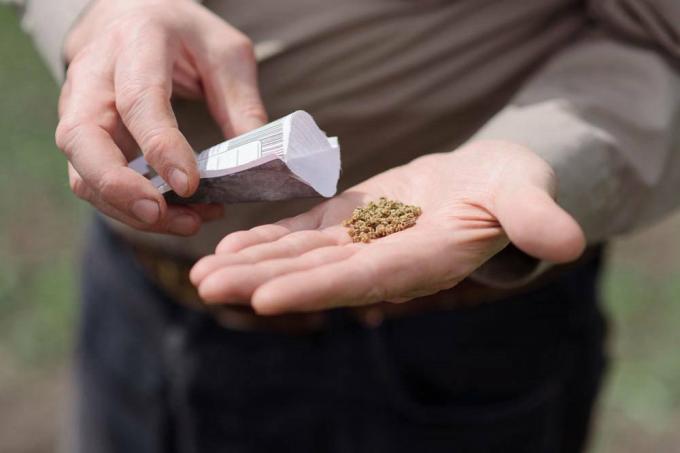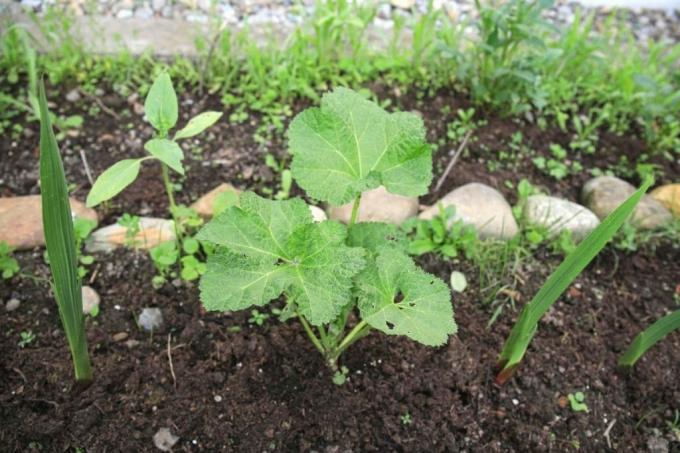
table of contents
- Hollyhocks
- Prefer hollyhocks
- sowing
- Prick out
- Planting out
- Heyday
- care
- Diseases
- frequently asked Questions
Hollyhocks are decorative, bee-friendly, hardy and easy to care for. You don't need more than a sunny spot. On the windowsill, you can prefer hollyhocks. The effort is rewarded with magical flowers.
In a nutshell
- Hollyhocks (Alcea) belong to the mallow family (Malvaceae)
- Plants are biennial
- Propagation takes place through seeds
- It is possible to prefer hollyhocks on the windowsill or in the greenhouse
- Flowers form in the second year after sowing
Hollyhocks
Hollyhocks, like hibiscus, marshmallow and mallow, belong to the mallow family. The long-stemmed flowers are in almost every imaginable color, from white to pink, red to almost black flowers - everything is included. Maintenance is straightforward.
Prefer hollyhocks
Preference is particularly suitable for vegetables and flowers that are sensitive to the cold, such as hollyhocks. These may only be planted outdoors after the ice saints. If you prefer the plants in warm rooms, you will give them a head start in terms of growth. Another effect is that it quickly becomes apparent which seeds are used to create healthy, strong plants. If you prefer hollyhocks, you can choose the most vigorous ones.

The substrate
Preference for hollyhocks is possible with commercially available potting soil. This contains few nutrients. This prevents too rapid growth. The slow growth leads to stable roots and well-developed plants.
Point of time
You can sow hollyhock seeds from February to March.
Greenhouse, seed trays or pots
Anyone who can use a greenhouse to grow the hollyhocks has a great chance of attractive plants. Alternatively, you can use growing trays or pots that you set up in a warm place in your home.
Tip: If you are sowing different varieties of hollyhocks, think about the labeling.
sowing
Instructions:
- Fill in Potting soil in a seed tray or individual pots.
- Spray the surface with water.
- Pull about an inch deep with a sausage skewer Furrows about eight centimeters apart into the earth.
- Sow the Mallow seeds with one to two centimeters apart into the furrows.
- If using pots, dig small holes and place three to four seeds in them.
- Give a 0.5 centimeter thick layer of potting soil on the surface.
- Press the surface firmly and spray them with water.
- Drag Cling film about the growing trays and pots.
- Put this on a warm location on the windowsill.
- At a temperature of 20 degrees Celsius the seeds will sprout in a few days.
- to water The seed Every day. It has to be continuously moist.

Note: If you use a nursery greenhouse to grow your hollyhocks, ensure regular ventilation.
Prick out
After ten to fourteen days, small plants will be visible. If, after about five weeks, at least two leaves can be seen in addition to the two cotyledons, it is time to prick out.
Instructions:
- Fill in a Mixture of potting soil and potting soil in plastic pots with a diameter of about eight centimeters.
- Dig in with a spoon small hole in the earth.
- Prick with one Prick wood next to a strong seedling a.
- Lever the plant carefully out.
- Put it in the prepared flower pot with a small spoon.
- to water The plant.
- Place the pricked plants in the windowsill and water them regularly.
Planting out
At the end of May, when night frosts are no longer to be expected, you can slowly get the hollyhocks used to the field. Place the pots outdoors during the day, if possible in a sunny, warm place. Plant them in the bed after the ice saints.

Heyday
If you prefer hollyhocks from seeds yourself, they will not bloom until the second season. The plants offered in specialist shops usually have buds and bloom in the first year. Hollyhocks are two years old. After flowering, they form seeds and then die. You can get around that by making a timely cut. Hollyhocks that are cut back immediately after flowering will not seed and will flower again the next year.
care
If you find a sunny place in the garden for your hollyhocks, water them regularly and prune them back in good time, you can enjoy the splendor of flowers for many years. We recommend fertilizing the plants with a guano fertilizer every month during the growing season. This contains all the important nutrients and stimulates flower formation.
Diseases
Hollyhocks are often attacked by rust fungi. The mallow rust becomes visible through rust-brown pustules. The plants become unsightly as a result of the infestation. We recommend removing diseased parts of the plant and disposing of them in the residual waste.
frequently asked Questions
Seeds cannot be kept indefinitely. In order to check the germination capacity, a germ test is recommended. To do this, put some hollyhock seeds on a damp kitchen towel in a glass bowl. The shell is covered with cling film. Make sure the paper stays damp. If half of the seeds have sprouted after a few days, the seeds can still be used.
There are many advantages to giving preference to hollyhocks, but it is not urgently needed. It is also possible to sow the seeds directly in the bed. The vigorous plants can be moved in autumn. In the following year you can enjoy the splendor of the flowers.
Hollyhocks are a real pasture for bees. Bees, bumblebees and butterflies are particularly attracted to varieties with unfilled flowers. Due to the high growth, the flowers are suitable for planting house walls and fences. When they get very large, they can be tied up. Medium-high flowering perennials such as delphinium or lupins are perfect bedding partners. They have similar needs in terms of care and location.



